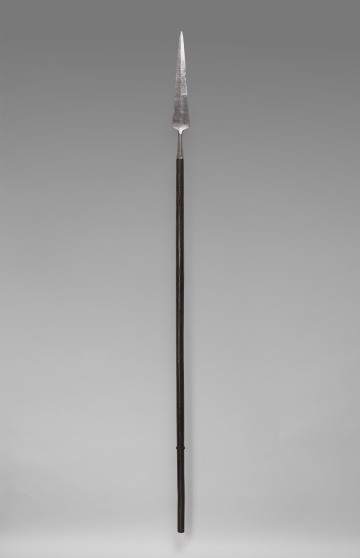Langdebeve (Ox Tongue) Spear
- Culture
- Italian
- Date
- 15th or early 16th century
- Material
- Iron and wood
- Classification
- Arms & armor, metalwork
- Collection
- Decorative Arts and Design
- Current Location
- On View, Gallery 138
- Dimensions
- overall length: 83 3/8 x 3 x 1 5/8 in. (211.8 x 7.6 x 4.1 cm)
blade length: 17 in. (43.2 cm)
weight: 3 lb. 2 oz. (1.4 kg) - Credit Line
- Museum Purchase
- Rights
- Public Domain
- Object Number
- 433:1919
NOTES
Staff weapons, popularly called polearms, were the most typical infantry weapons until well into the 16th century. Most staff weapons evolved from agricultural or everyday tools modified for military use and simply fastened to long wooden staves. All polearms require the use of both hands and were used exclusively on foot, except for the long spear called a lance, which was used from horseback. Staff weapons were used by commoners and professional soldiers in battle, by knights in armored sporting combats, and by bodyguards of royalty. Like many other arms, staff weapons assumed a primarily ceremonial role by the mid-17th century.
Provenance
- 1919
Theodore Offerman, New York, NY, USA
1919 -
Saint Louis Art Museum, purchased at auction "The Theodore Offerman Collection," American Art Association, New York, NY, February 7-8, 1919, lot 498A [1]
Notes:
[1] Saint Louis Art Museum Accession Log [SLAM archives].
Theodore Offerman, New York, NY, USA
1919 -
Saint Louis Art Museum, purchased at auction "The Theodore Offerman Collection," American Art Association, New York, NY, February 7-8, 1919, lot 498A [1]
Notes:
[1] Saint Louis Art Museum Accession Log [SLAM archives].
We regularly update records, which may be incomplete. If you have additional information, please contact us at provenance@slam.org.

